
How to Use 4-Channel Bi-Directional Logic Level Shifter: Examples, Pinouts, and Specs
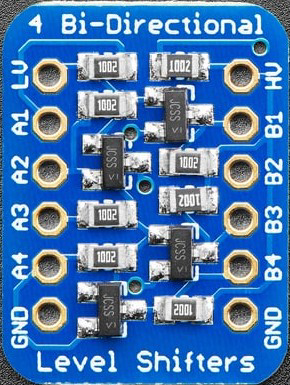
 Design with 4-Channel Bi-Directional Logic Level Shifter in Cirkit Designer
Design with 4-Channel Bi-Directional Logic Level Shifter in Cirkit DesignerIntroduction
The 4-Channel Bi-Directional Logic Level Shifter (Manufacturer Part ID: BSS138 Level Shifter Module) is a compact and versatile device designed to facilitate communication between electronic components operating at different voltage levels. It enables seamless bi-directional data transfer across four independent channels, making it an essential tool for interfacing low-voltage microcontrollers (e.g., 3.3V) with higher-voltage peripherals (e.g., 5V).
Explore Projects Built with 4-Channel Bi-Directional Logic Level Shifter
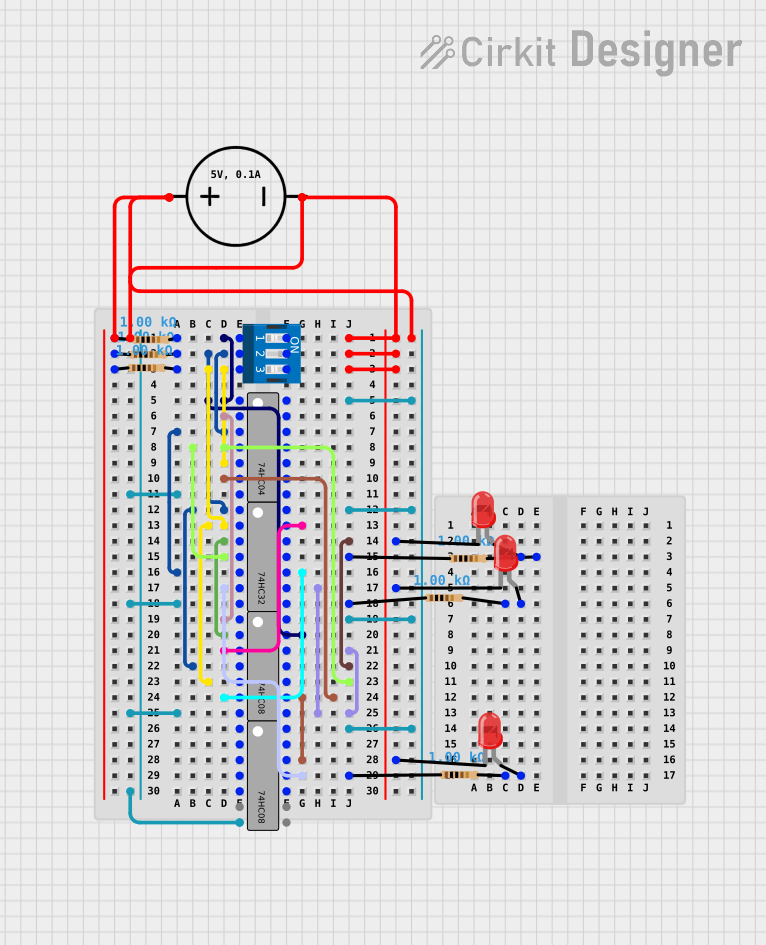
 Open Project in Cirkit Designer
Open Project in Cirkit Designer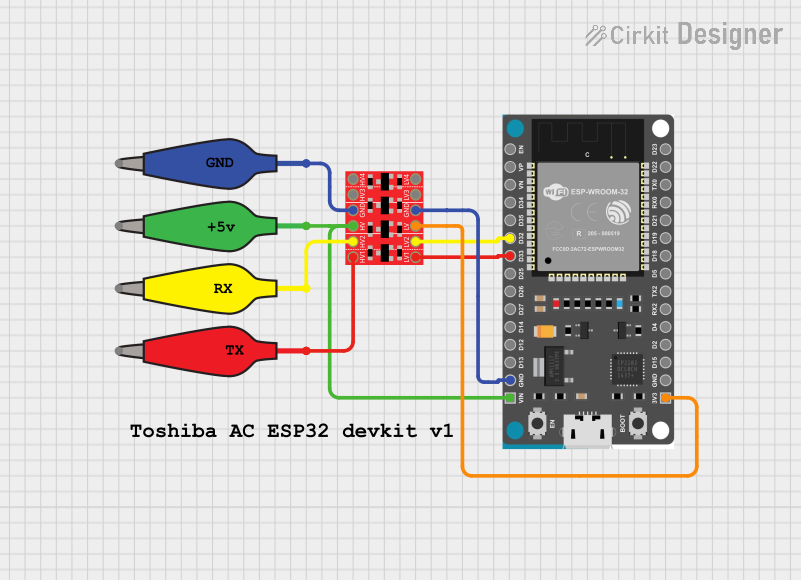
 Open Project in Cirkit Designer
Open Project in Cirkit Designer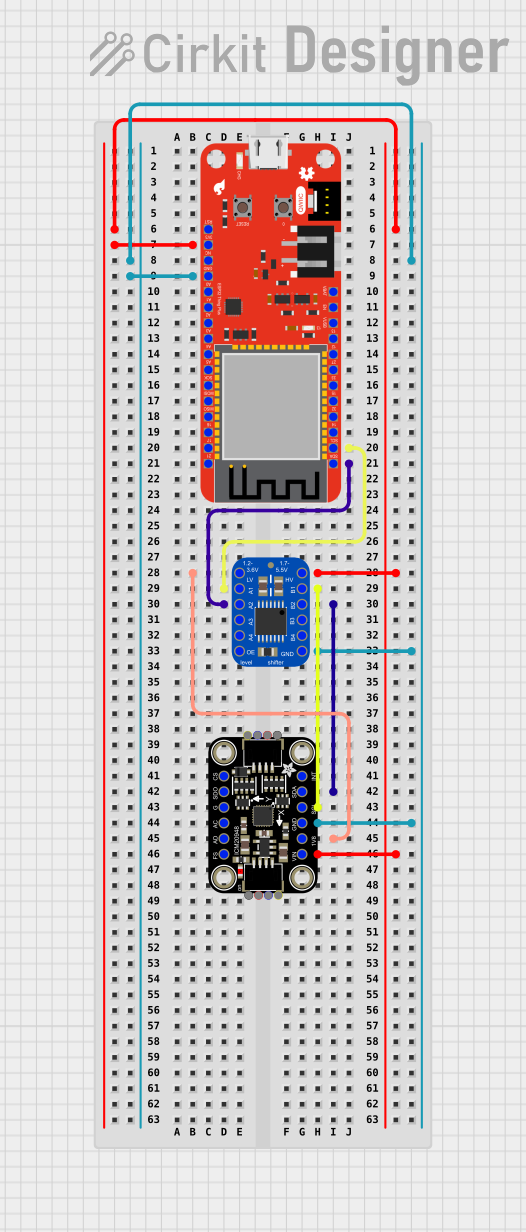
 Open Project in Cirkit Designer
Open Project in Cirkit Designer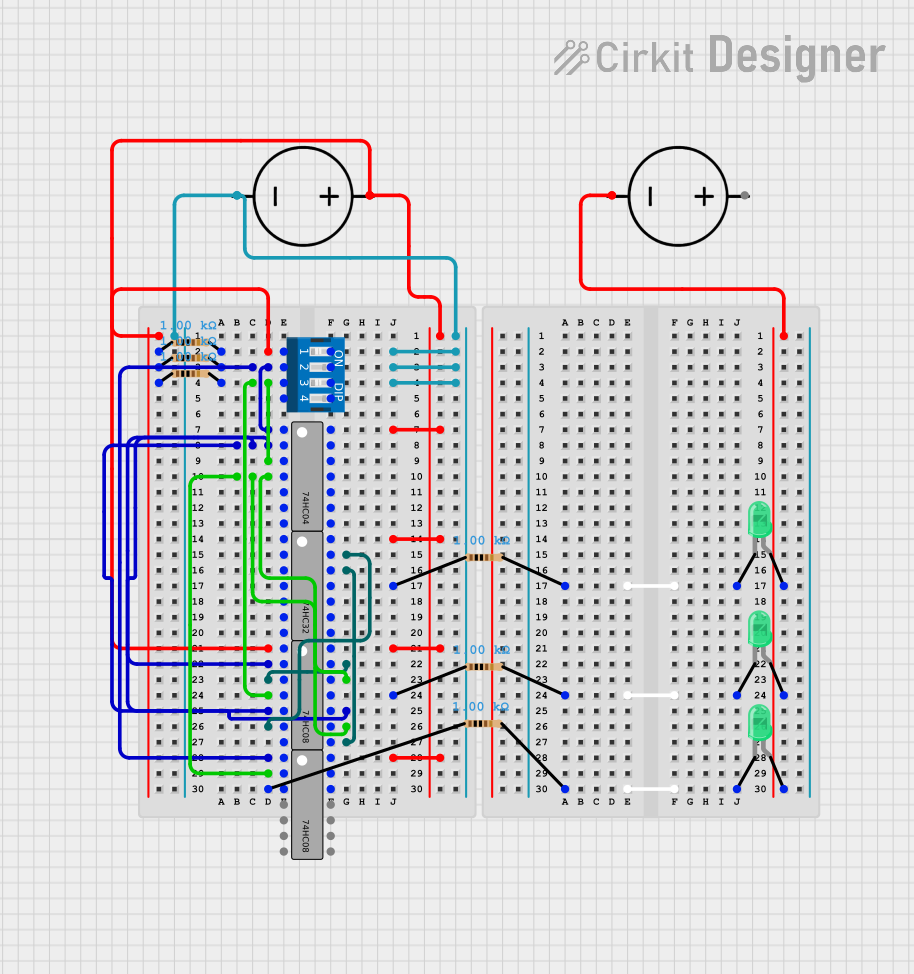
 Open Project in Cirkit Designer
Open Project in Cirkit DesignerExplore Projects Built with 4-Channel Bi-Directional Logic Level Shifter

 Open Project in Cirkit Designer
Open Project in Cirkit Designer
 Open Project in Cirkit Designer
Open Project in Cirkit Designer
 Open Project in Cirkit Designer
Open Project in Cirkit Designer
 Open Project in Cirkit Designer
Open Project in Cirkit DesignerCommon Applications and Use Cases
- Interfacing 3.3V microcontrollers (e.g., ESP32, Raspberry Pi) with 5V sensors or modules.
- Enabling communication between 1.8V, 3.3V, and 5V devices in mixed-voltage systems.
- Level shifting for I2C, SPI, UART, and other digital communication protocols.
- Prototyping and development of mixed-voltage circuits.
Technical Specifications
The following table outlines the key technical details of the 4-Channel Bi-Directional Logic Level Shifter:
| Parameter | Specification |
|---|---|
| Operating Voltage (High) | 5V |
| Operating Voltage (Low) | 1.8V to 3.3V |
| Number of Channels | 4 |
| Communication Type | Bi-Directional |
| Transistor Type | N-Channel MOSFET (BSS138) |
| Maximum Data Rate | ~100 kHz (I2C) |
| Dimensions | ~15mm x 15mm |
Pin Configuration and Descriptions
The module has 8 pins, divided into two voltage domains: High Voltage (HV) and Low Voltage (LV). The table below describes each pin:
| Pin Name | Description |
|---|---|
| HV | High voltage input (e.g., 5V). Connect to the higher voltage power supply. |
| LV | Low voltage input (e.g., 3.3V). Connect to the lower voltage power supply. |
| GND | Ground. Connect to the common ground of the circuit. |
| HV1, HV2, HV3, HV4 | High voltage side of the four channels. Connect to the high-voltage device. |
| LV1, LV2, LV3, LV4 | Low voltage side of the four channels. Connect to the low-voltage device. |
Usage Instructions
How to Use the Component in a Circuit
Power Connections:
- Connect the HV pin to the higher voltage power supply (e.g., 5V).
- Connect the LV pin to the lower voltage power supply (e.g., 3.3V).
- Connect the GND pin to the common ground of the circuit.
Data Connections:
- For each channel, connect the high-voltage signal to the corresponding HVx pin.
- Connect the low-voltage signal to the corresponding LVx pin.
- Repeat for all channels as needed.
Communication Protocols:
- The module supports I2C, SPI, UART, and other digital protocols. Ensure proper pull-up resistors are used for I2C communication.
Important Considerations and Best Practices
- Voltage Compatibility: Ensure the voltage levels on the HV and LV sides match the specifications of the connected devices.
- Pull-Up Resistors: For I2C communication, use appropriate pull-up resistors on both the HV and LV sides.
- Data Rate: The module is suitable for low- to medium-speed communication (e.g., ~100 kHz for I2C). For higher speeds, verify signal integrity.
- Common Ground: Always connect the ground of the module to the ground of all connected devices.
Example: Connecting to an Arduino UNO
Below is an example of using the level shifter to interface a 3.3V sensor with a 5V Arduino UNO via I2C:
Circuit Connections
- HV: Connect to Arduino's 5V pin.
- LV: Connect to the sensor's 3.3V pin.
- GND: Connect to the common ground.
- HV1, HV2: Connect to Arduino's SDA and SCL pins, respectively.
- LV1, LV2: Connect to the sensor's SDA and SCL pins, respectively.
Arduino Code Example
#include <Wire.h> // Include the I2C library
void setup() {
Wire.begin(); // Initialize I2C communication
Serial.begin(9600); // Start serial communication for debugging
Serial.println("I2C Level Shifter Example");
}
void loop() {
// Example: Request data from a 3.3V sensor at address 0x40
Wire.beginTransmission(0x40); // Start communication with the sensor
Wire.write(0x00); // Send a command or register address
Wire.endTransmission(); // End transmission
Wire.requestFrom(0x40, 2); // Request 2 bytes of data
if (Wire.available() == 2) {
int data = Wire.read() << 8 | Wire.read(); // Read and combine the data
Serial.print("Sensor Data: ");
Serial.println(data); // Print the received data
}
delay(1000); // Wait 1 second before the next request
}
Troubleshooting and FAQs
Common Issues and Solutions
No Communication Between Devices:
- Verify that the HV and LV pins are connected to the correct voltage levels.
- Ensure the ground of all devices is connected to the module's GND pin.
- Check for proper pull-up resistors on I2C lines.
Data Corruption or Signal Loss:
- Reduce the data rate if operating at high speeds.
- Ensure the signal lines are not too long, as this can cause signal degradation.
Overheating or Damage:
- Double-check that the voltage levels do not exceed the module's specifications.
- Avoid short circuits between HV and LV pins.
FAQs
Q: Can this module be used for analog signals?
A: No, the module is designed for digital signals only. It is not suitable for analog signal level shifting.
Q: What is the maximum voltage supported on the HV side?
A: The HV side supports a maximum voltage of 5V. Exceeding this may damage the module.
Q: Can I use fewer than four channels?
A: Yes, you can use as many or as few channels as needed. Unused channels can be left unconnected.
Q: Does the module require external power?
A: No, the module is powered directly from the HV and LV voltage inputs.
By following this documentation, you can effectively integrate the 4-Channel Bi-Directional Logic Level Shifter into your projects and ensure reliable communication between devices operating at different voltage levels.